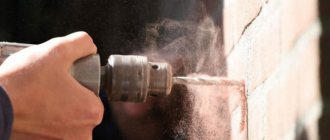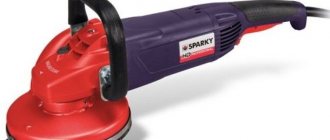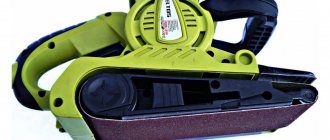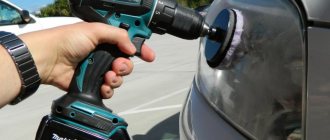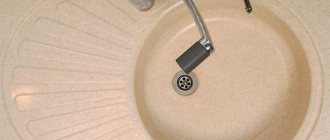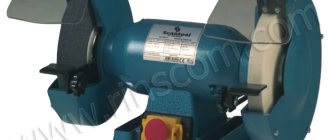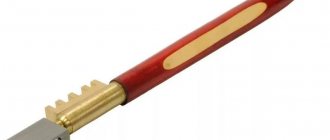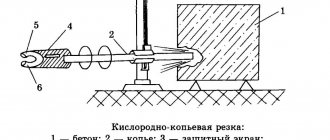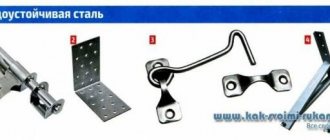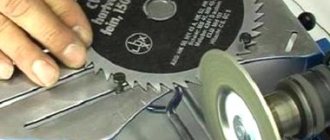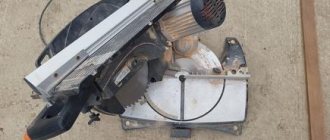Types of diamond blades for metal
Diamond blades vary in purpose, design, and manufacturing technology.
- If they are a round steel plate with a strip of diamond grains applied to its outer edge, they are called solid.
- If they have slots from the edge to the center for approximately 10–15% of the diameter, necessary for heat dissipation, they are called segmented. They can operate at high speeds.
- If an oblique notch is applied to the surface, then this is a turbo. They are more durable.
- A diamond cutting disc with slots and serrations is the most productive and is called turbo-segmented.
The marginal strip of grains is called the cutting edge. Diamond grains come in different sizes and are attached to metal in different ways. The size of diamonds determines work efficiency and working life. Large grains wash the metal being processed better, but wear out more quickly. Small ones work more accurately on metal, but their productivity is lower. But they have a higher working resource.
Diamond grains are attached to a steel plate in various ways: soldering, laser welding, and electroplating. The purpose of the tool also depends on the method of fastening. Discs with soldered grains are used in conjunction with water cooling. Galvanically bonded grains work well with soft materials. Diamond blades with welded grains are good for cutting hard metal alloys.
Diamonds are fixed in the working rim in a certain order. There are disks with a uniform distribution, when segments of the same length contain the same number of crystals.
But there are products in which diamonds are placed at a certain frequency (sandwich). They have greater productivity, exert less pressure on the tool, are better cooled and distribute forces more evenly.
Main advantages and disadvantages
Diamond cutting discs are a universal tool. They are suitable for cutting not only metal, but also other materials of increased hardness: brick, reinforced concrete, foam concrete and others. The advantages of this tool include:
- increased geometric cutting accuracy;
- flat surface;
- almost silent operation.
The diamond blade does not exert pressure on structures adjacent to the cutting surface and does not change the structure of the material during operation. At the same time, significantly less time is spent on completing the work than when using other tools. The diamond wheel operates in the absence of a flow of sparks, and, as a result, there is no burning smell.
The cost of work using diamond blades should be calculated for each specific job.
The disadvantages of such a device include its high cost, but the working life of a diamond cutting tool significantly exceeds (almost 70 times) the working life of abrasive discs performing the same work. Equipment downtime is reduced by reducing the frequency of tool replacement. When using active cooling, it is possible to increase rotation speed and productivity. Throughout its service life, the tool retains its geometric characteristics.
Brands and cost of tools
The price of diamond wheels depends on many reasons:
- areas of use;
- characteristics;
- processing properties;
- functionality;
- brands.
A professional diamond disc from a well-known manufacturer helps guarantee continuous operation throughout the entire shift without overheating. More well-known brands in this market are:
- Distar;
- Bosch;
- INTERTOOL;
- Matrix;
- Hilti;
- Sparta;
- Bison;
- Center tool.
So, now you understand that diamond blades for concrete have different types and characteristics. They must be selected carefully depending on the purpose, characteristics of the material and other characteristics.
Main characteristics and markings
One of the main characteristics of a diamond blade is its size - the outer diameter, on which the maximum cutting depth depends. For a universal grinder (angle grinder, grinder) there is a size range: 115, 125, 180 and 230 mm. Powerful metal cutting machines are equipped with devices with a diameter of 150, 300 or more millimeters. The mounting holes located in the center are used for installation on the mechanism shaft and have diameters of 22.2 or 25.4 mm. Like any product, a diamond cutting disc has a set of basic characteristics:
- type;
- size;
- the abrasive material from which it is made;
- the material for which it is intended for processing;
- grain;
- hardness;
- type of ligament;
- maximum speed;
- accuracy class;
- manufacturer.
These characteristics are encrypted in the form of alphanumeric markings, which are present on each diamond blade. The rules for labeling do not have strict regulations. Each manufacturer designs it differently, but the main characteristics are always present.
- Disk type. In theory, there should be a digital designation: straight profile;
- cutting;
- with recessed center.
- D – outer diameter;
- ceramic bond – V (K – old designation);
What does the marking on a diamond cutting blade mean? As an example, we consider the symbols printed on the tool of the Russian manufacturer ISMA flex (see figure).
Features of cutting different materials
The grinder is used for processing various materials. Based on the type of product, suitable attachments are selected.
Tree
Wood processing requires a specialist to follow a number of rules.
- The floor surface is covered with film or material from which dust can be easily collected.
- The old coating is removed from the product.
- A protective cover is put on the grinder.
- The circle is held at a slight angle to the surface being treated. The movements are reciprocating, without pressure.
Ceramic tile
For ceramic tiles, use a disc with diamond chips.
- The tiles are laid on the table and secured.
- The first is to make an incision 1.5 millimeters deep at low speed.
- Finally, the tile is transferred to the edge of the table and broken along the cut line.
Metal
A grinder is a suitable tool for cutting reinforcement, round timber, pipes, angles and other metal products.
- The disk is selected based on the type of product.
- The work is carried out with short breaks. It is not recommended to cut continuously for more than 5-7 minutes.
- The workpieces are securely fixed.
- To cut a thick profile, additional cooling of the disk is used. The cut is made straight.
- There is no strong pressure on the grinder. Excessive force leads to fractures and clamping of the disc.
- Grinding heads are used to process the edges.
Glass
Glass is prone to chipping and cracking, so it should be cut with extreme caution.
- A diamond-coated disc is installed in the grinder.
- Markings are applied to the glass.
- The incision area is moistened with water.
- The incision is made to a depth of no more than 1.5 millimeters.
- A break is made along the cut made.
- The edge of the chip is sanded.
When cutting glass, chips and cracks often occur; work is carried out with extreme caution.
Stone (artificial or natural)
To work with granite, marble, concrete products, and bricks, a diamond-coated segmental disc is used. For high-quality stone cutting, an abrasive with a size in the range from 50 to 1600 microns is better suited. According to the FEPA system from F220 to F16.
There are two techniques used for cutting stone: wet cutting and dry cutting. Each has its own advantages and disadvantages. When cutting dry, the material begins to gather dust; when cutting wet, it produces more dirt.
Other types of materials
When processing other types of materials, it is recommended to adhere to general safety principles. It is necessary to select the correct nozzle and install the workpiece. Only after this do they move on to cutting or grinding.
Beginners are advised to carefully study the instructions before work and not neglect protective equipment.
Diamond blade manufacturers
The following companies are deservedly popular among manufacturers:
- Bosch. German leader in the production of power tools and related materials.
- FIT. The Canadian company produces tools for professional and household use.
- Dremel American company producing high quality power tools.
- Husqvarna. A Swiss company that is known for its high performance and level of durability.
- MESSER. A Korean manufacturer that produces a wide range of attachments for grinders.
- Zubr. Russian company producing power tools and cutting equipment.
- Hitachi Power Tools, Luga Abrasiv Extra. Has excellent value for money.
Diamond cutting discs are an effective tool with high productivity and provide comfortable conditions when performing work. Do you have experience working with them? Be sure to share it in the comments to this article.
Will a diamond wheel for concrete for an angle grinder get stuck if it gets on the reinforcement?
Or is it designed for the fact that there is reinforcement in concrete
It all depends on the time and effort of contact, if you are persistent in sawing, screwing up,
I have a lot of 4's in my walls. It sparks, but goes away.
I sawed through thin (5-6 mm) reinforcement several times. You can feel it by a drop in speed and the appearance of sparks. Due to the small number of hits, I did not notice any changes in the disk.
I cut the welded mesh a little and I didn’t notice any accelerated wear in concrete
ilart wrote: Or is it designed for the fact that there is reinforcement in concrete
Depends on the type of circle.
Alex___dr wrote: Depends on the type of circle.
I often passed through reinforcement, even 10-point, with a diamond segment wheel. Without consequences.
DOKA wrote: I often passed through reinforcement, even 10-point, with a diamond segment wheel. Without consequences.
Who would object! Diamond wheels for reinforced concrete – segmented.
Thank you all for the comprehensive information. I won’t be particularly afraid of reinforcement bars now.
ilart wrote: Or is it designed for the fact that there is reinforcement in concrete
There are special wheels for concrete and cutting reinforcement at the same time. They really cost more. Before the New Year, I bought myself a Bosch grinder - they offered me one. Like a new model and all that. It really looks more solid than a simple concrete disc.
" > . Diamond blades are not suitable for cutting metal structures or steel and aluminum sheets. Nothing has been written about reinforcement in concrete.
